AllTrust Pest Control seeks to effectively communicate, educate and engage its customers through its use of educated and experienced integrated pest management professionals who combat pests utilizing the industry’s leading pest products and integrated pest management practices. At AllTrust Pest Control we know the success of any pest control service plan is not only dependent upon the knowledge and technical skill of the technician but also the trust that exists within the client/service provider relationship. All AllTrust Pest Control services are communicated from start to finish with our clients discussing everything including the pests involved, the control process, and products that will be used. Your technician will always discuss the needed safety precautions you must take before and after your service, the price of your service, the scheduling of your next service and what to expect following your service. AllTrust Pest Control is dedicated to your complete satisfaction and earning your trust!
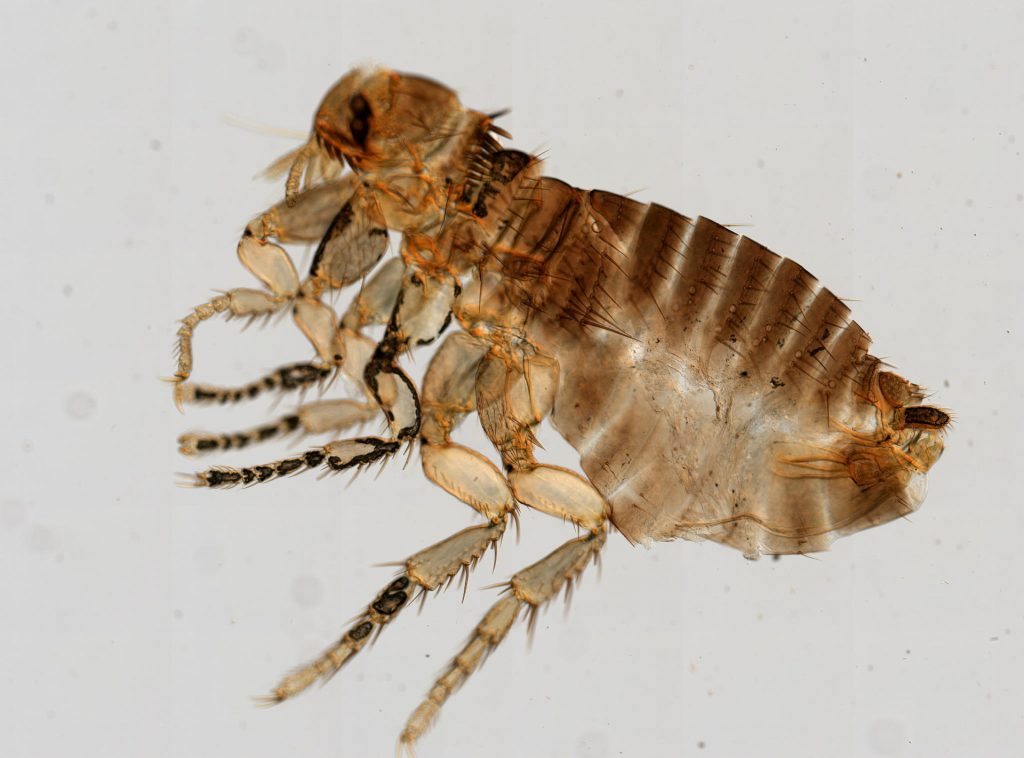
Fleas are small wingless insects approximately 1/12 inch to 1/6 inch long, with a flat and thin body. They have six long legs, are reddish-brown in color, and have microscopic body hairs. Fleas can lay 400-500 eggs in their short life of approximately 100 days. Fleas are known to jump from host to host, and can jump upwards to 50 times their body length! Hosts vary to include furry pets such as cats, dogs or rabbits and humans. They need the blood from a host to live. Once the fleas have found a host, they will infest their fur and sleeping areas. Pet scratching and human bites are signs of a flea infestation. The flea dirt, or adult flea feces, resembles coarse ground pepper and can usually be seen in pet beds, rugs, carpets, etc. Adult fleas can often be seen when jumping.
Fleas are known to be difficult to kill. All infected animals and infested areas will need to be treated and cleaned. Preventative measures are best, such as regular bathing and grooming, washing all pet sleeping areas, and regular vacuuming to remove the four stages of fleas: egg, larva, pupa, and imago (adult). If you are experiencing a flea infestation, a trained pest professional can conduct an inspection and create a method of treatment.
Flea services are generally 3 parts due to the life cycle of fleas.
Silverfish are typically .5 inch to .75 inch long with their body tapered at one end, which gives them the fish appearance and commonly known name. Their scientific name, Lepisma Saccharina is based on their diet of starchy food, high in proteins and carbohydrates, and dextrin, which is found in numerous adhesives. Therefore, silverfish may be found in carpet, glues, books, paper, photos, wallpaper, etc. However, they are also known to eat tapestries so they may be found damaging linens, silks, cotton, etc. When first hatched they are white in color and as they get older they become a metallic greyish color with silvery scales and have antennae. Since they are wingless insects, silverfish move by wiggling, again resembling a fish, and are fast enough to outrun many predators.
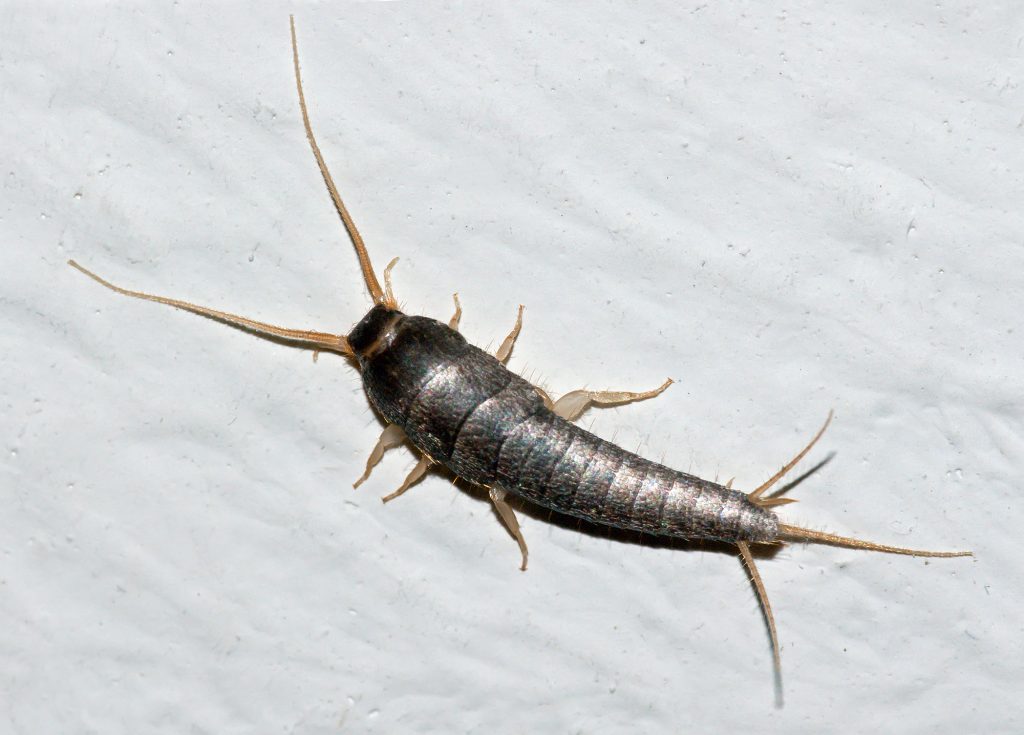
Silverfish are nocturnal, avoiding light, and live in moist areas. Since they require places between 70-90% humidity, they can be found in basements, bathrooms, sinks, etc. Due to their diet and destruction of so many goods, it is important to contact a pest professional to develop a treatment plan.
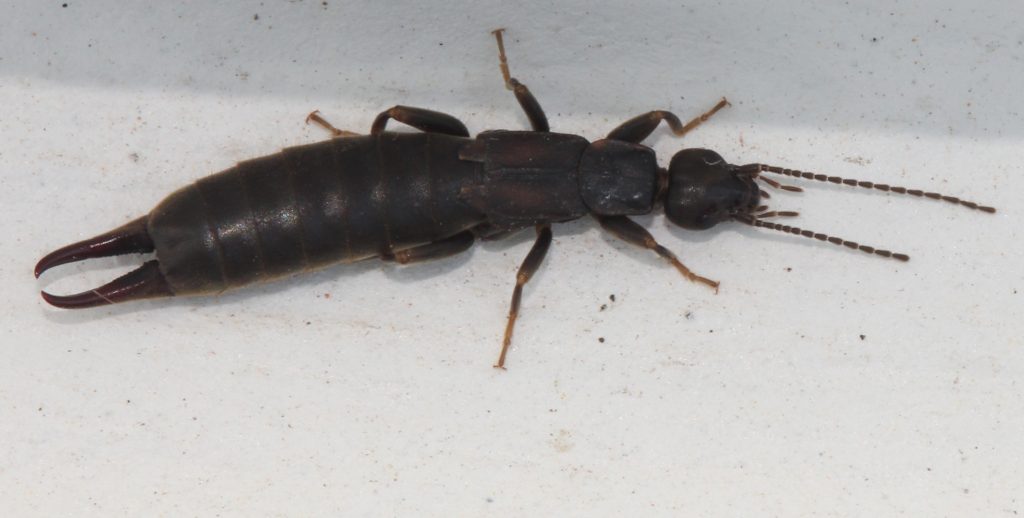
Earwigs are ¼-1inch long with long slender bodies, 6 legs, antennae, 2 pairs of wings and two pincers in the back of their body. They can be very light brown to dark brown to what some consider black in color. There was a European myth that earwigs crawl into the ears of humans (thus their name) and burrow into their brains which is completely false! Unlike most insects, females will care for their eggs and nymphs until after their second molt. In the year leading up to adulthood, nymphs will molt an average of five times.
Earwigs can be found all over the United States and often live together in damp locations and will enter a building through exterior cracks and crevices. They are generally nocturnal, feeding on numerous insects and plants. If you are experiencing damage to your plants and foliage, both outside and inside, contact a pest control professional to do an inspection and set up a treatment plan.
Centipedes have a long body similar to a worm with a pair of legs for each segment of the body. They can be yellowish to dark brown in color and 1/8 inch to 6 inches long. Antennae covered with hairs appear on their heads along with venomous jaws. Although they do have the ability to bite, they will rarely make contact with humans, as they are very fast and nocturnal. Centipedes can be found anywhere in the United States. Moist areas both inside and outside serve as homes to centipedes. Outside, they may be found under rocks or mulch, in tree trunks, or under leaves or landscaping where it is dark and damp. Inside, they are typically located in basements, attics, crawl spaces, and even household plants.
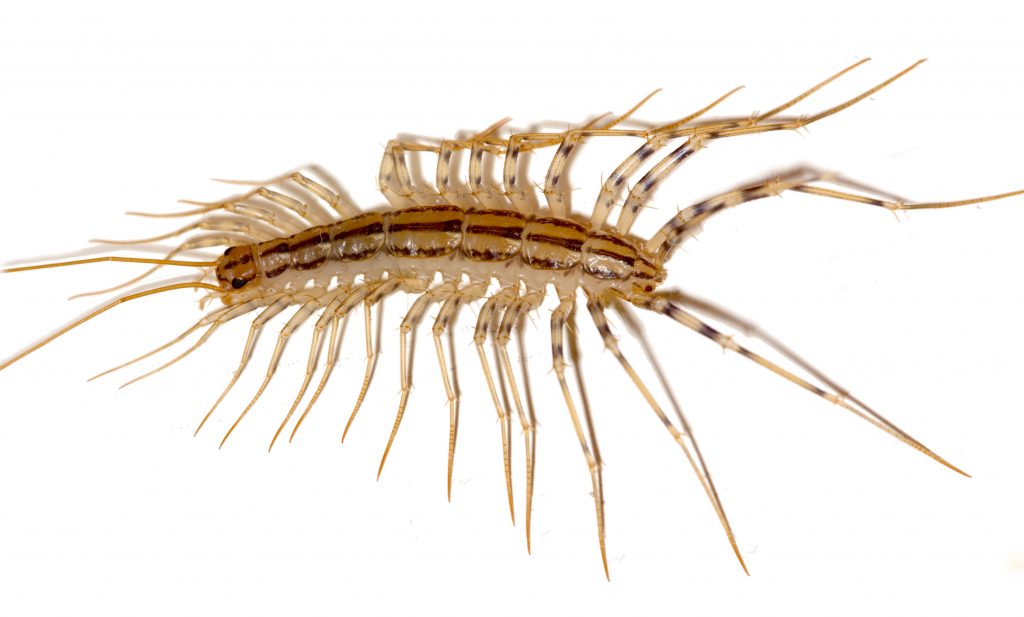
Often centipedes are confused with millipedes. There are specific similarities between the two such as having long segmented bodies with many legs and a pair of antennae. However, many differences help with proper identification such as millipedes having short elbowed antennae while centipedes have long, threadlike antennae. A professional pest control technician can properly identify which one it is and how to proceed to achieve control.
Millipedes are arthropods, meaning they are invertebrates with a segmented body, an external skeleton, and a pair of jointed legs per segment. Most millipedes have long bodies and are cylinder-shaped with more than 20 segments. Although they can vary in shape, color (usually brown or black) and size, they may be 1/16 inch to 4.5 inches in length. Eating fungi, decaying plants, and juices from live plants, they can often be found in landscaping but are generally harmless to humans other than becoming a pest in their gardens.
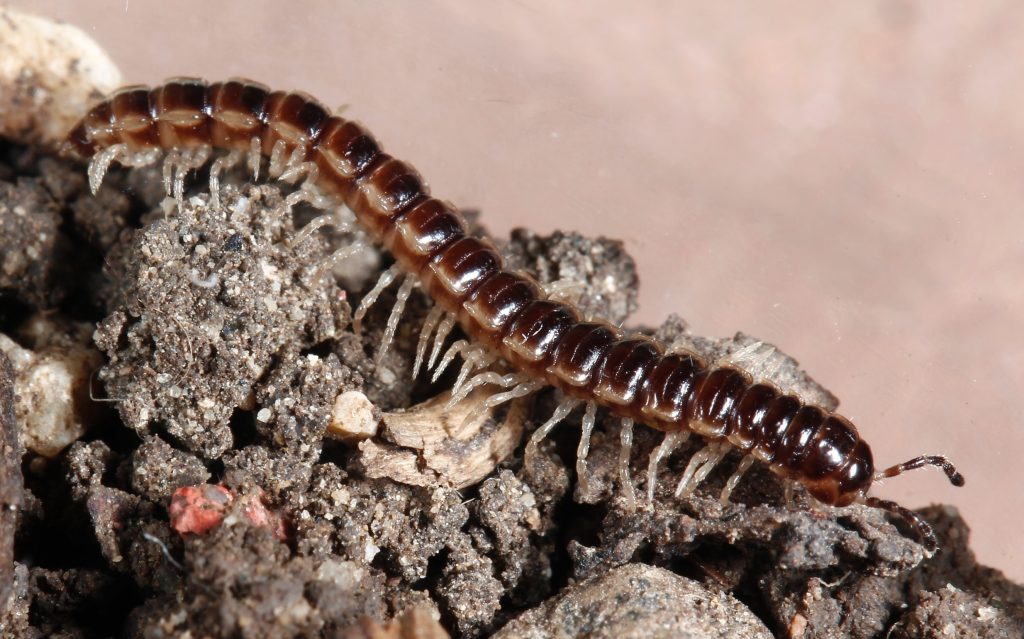
Often millipedes are confused with centipedes. There are specific similarities between the two such as having long segmented bodies with many legs and a pair of antennae. However, many differences help with proper identification such as millipedes having short elbowed antennae while centipedes have long, threadlike antennae. A professional pest control technician can properly identify which one it is and how to proceed to achieve control.
